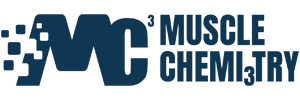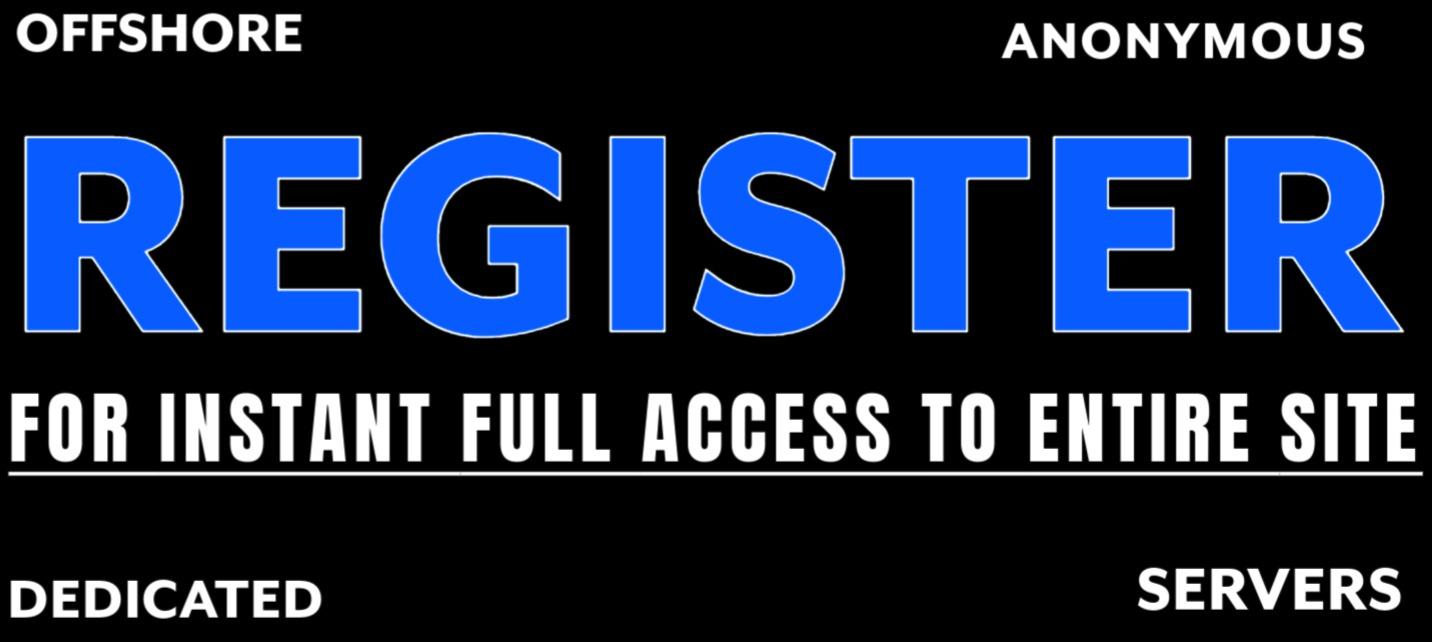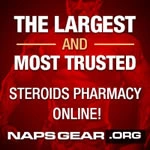gandhisays
Stage Pro
So you are nearing the end of your hard ass leg session, and just to say you did then, you throw in some heavy calf raises at the end. And voila, your calf muscles have been ‘hit’ for the week.
Stop! Calf training shouldn’t be an afterthought, it should be at the forefront of your bodybuilding regiment and viewed just as importantly as lets say, an arm day, or leg day would be.
The calf muscles for some is a muscle that is well rounded in size and has that beautiful diamond shape you’d see on a comic book character, and for others, it is a much tougher muscle to build and is more akin to what you’d see on Johnny Bravo or in a match box…
Why are they so hard to build?
Calves can be one of the hardest body parts to develop and train properly.
One of the reasons that it is a tough muscle to build is that the calves are the furthest muscle away from the heart, so getting blood to them takes a lot longer.
Another reason is plain old genetics, as you would think plenty of walking would help with this stubborn muscle group, but some people actually don’t add any pressure onto their calves when walking, as they naturally use their hips and upper legs instead, so they are eliminating the calf muscles completely.
So can all of this be overcome? How do you get them to grow adequately?
Make Them a Priority
Prioritize Calves; Don’t Make Them an Afterthought
You would think this would be a no-brainer for someone looking to boost a stubborn body part, but most people still treat their calf training as an “extra” at the end of a hard legs workout. Those who really need work on this muscle group must train them hard and heavy with as much focus as any other muscle group.
You might want to place calves at the beginning of your workouts instead of the end. Some people like to work their calves before they train the rest of their legs, but this could present a potential issue as it could fatigue your legs and hamper your strength on squats or other lower body exercises.
So why not train your calves at the very beginning of an upper body workout? So that there is no interference between muscle groups. The best training days for this are ones that might not take as long, such as chest or arms or shoulders.
There are 3 major muscle groups in the lower leg and if you start working all 3 major muscle groups this will help you attain that fuller look to your calves.
Here are the 3 major muscle groups of the lower leg:
Gastrocnemius
This is the largest calf muscle and the one that most people work. This is the one that you see when flexing and looking down at your calves. The gastrocnemius is 51 percent fast twitch muscle fibers.
Gastrocnemius Exercises:
Standing calf raise exercises
Donkey calf raises
and all variations of those two calf muscle exercises will work the large gastrocnemius muscle.
Soleus
The soleus is another large calf muscle. If you looked at someone’s calves as you were standing behind them, you would see the soleus muscles running down both sides of the lower leg. And the soleus is 80 percent slow twitch muscle fibers.
The soleus gives the calves depth and thickness because the soleus lies beneath the larger gastrocnemius muscle.
The soleus is worked during calf muscle exercises in which the knee is bent. So any variation of seated calf raises or squat raises will work the soleus.
Soleus Exercises:
Seated calf raises
Tibialis Anterior
The tibialis anterior is almost always ignored. It’s the huge frontal muscle that you can see if you flex your toe upwards and watch the area below the front part of your knee.
This muscle goes all the way down the front part of your lower leg. If you haven’t been working your tibialis anterior, you’ve been missing out.
Tibialis Anterior exercises:
Reverse calf raises (seated or standing).
Training Tips
Training frequency:
If you have the time to do so then 4- 5 times a week as a separate body part, or maybe even add them into your small muscle routine or if you do cardio in the morning, add a few sets in then. Ensure they are not just an afterthought
Range of Motion
Be sure to hit partial reps, full reps and full range of motion, also play with foot positioning like you would do when training the quads.
Also emphasize the mind to muscle connection during the eccentric contraction (lowering portion of the movement) and the concentric contraction (top of the movement where the muscles shorten).
How many reps should you do?
So the calf muscles are comprised of both fast twitch fibres and slow twitch muscle fibres, but the soleus is comprised of 80 percent of slow twitch fibres.
So in order train slow twitch fibres effectively you need to:
Use a higher rep range (go for 15-20 reps)
Use a slower tempo
Use shorter rest periods
If the rep range inquisition isn’t satisfactory then train to failure
Allow for more Time Under Tension (TUT).
TUT refers to the amount of time a certain muscle is held under tension.
The ideal TUT for strength is 20 seconds, building muscle is 40 seconds, and endurance is 70 seconds.
With all this knowledge now at your fingertips the quest for bigger calves has never been easier.
Now go and raise a glass, sorry a calf…
So you are nearing the end of your hard ass leg session, and just to say you did then, you throw in some heavy calf raises at the end. And voila, your calf muscles have been ‘hit’ for the week.
Stop! Calf training shouldn’t be an afterthought, it should be at the forefront of your bodybuilding regiment and viewed just as importantly as lets say, an arm day, or leg day would be.
The calf muscles for some is a muscle that is well rounded in size and has that beautiful diamond shape you’d see on a comic book character, and for others, it is a much tougher muscle to build and is more akin to what you’d see on Johnny Bravo or in a match box…
Why are they so hard to build?
Calves can be one of the hardest body parts to develop and train properly.
One of the reasons that it is a tough muscle to build is that the calves are the furthest muscle away from the heart, so getting blood to them takes a lot longer.
Another reason is plain old genetics, as you would think plenty of walking would help with this stubborn muscle group, but some people actually don’t add any pressure onto their calves when walking, as they naturally use their hips and upper legs instead, so they are eliminating the calf muscles completely.
So can all of this be overcome? How do you get them to grow adequately?
Make Them a Priority
Prioritize Calves; Don’t Make Them an Afterthought
You would think this would be a no-brainer for someone looking to boost a stubborn body part, but most people still treat their calf training as an “extra” at the end of a hard legs workout. Those who really need work on this muscle group must train them hard and heavy with as much focus as any other muscle group.
You might want to place calves at the beginning of your workouts instead of the end. Some people like to work their calves before they train the rest of their legs, but this could present a potential issue as it could fatigue your legs and hamper your strength on squats or other lower body exercises.
So why not train your calves at the very beginning of an upper body workout? So that there is no interference between muscle groups. The best training days for this are ones that might not take as long, such as chest or arms or shoulders.
There are 3 major muscle groups in the lower leg and if you start working all 3 major muscle groups this will help you attain that fuller look to your calves.
Here are the 3 major muscle groups of the lower leg:
Gastrocnemius
This is the largest calf muscle and the one that most people work. This is the one that you see when flexing and looking down at your calves. The gastrocnemius is 51 percent fast twitch muscle fibers.
Gastrocnemius Exercises:
The soleus is another large calf muscle. If you looked at someone’s calves as you were standing behind them, you would see the soleus muscles running down both sides of the lower leg. And the soleus is 80 percent slow twitch muscle fibers.
The soleus gives the calves depth and thickness because the soleus lies beneath the larger gastrocnemius muscle.
The soleus is worked during calf muscle exercises in which the knee is bent. So any variation of seated calf raises or squat raises will work the soleus.
Soleus Exercises:
The tibialis anterior is almost always ignored. It’s the huge frontal muscle that you can see if you flex your toe upwards and watch the area below the front part of your knee.
This muscle goes all the way down the front part of your lower leg. If you haven’t been working your tibialis anterior, you’ve been missing out.
Tibialis Anterior exercises:
 Training Tips
Training Tips
Training frequency:
So the calf muscles are comprised of both fast twitch fibres and slow twitch muscle fibres, but the soleus is comprised of 80 percent of slow twitch fibres.
So in order train slow twitch fibres effectively you need to:
The ideal TUT for strength is 20 seconds, building muscle is 40 seconds, and endurance is 70 seconds.
With all this knowledge now at your fingertips the quest for bigger calves has never been easier.
Now go and raise a glass, sorry a calf…
Click here to view the article.
Stop! Calf training shouldn’t be an afterthought, it should be at the forefront of your bodybuilding regiment and viewed just as importantly as lets say, an arm day, or leg day would be.
The calf muscles for some is a muscle that is well rounded in size and has that beautiful diamond shape you’d see on a comic book character, and for others, it is a much tougher muscle to build and is more akin to what you’d see on Johnny Bravo or in a match box…
Why are they so hard to build?
Calves can be one of the hardest body parts to develop and train properly.
One of the reasons that it is a tough muscle to build is that the calves are the furthest muscle away from the heart, so getting blood to them takes a lot longer.
Another reason is plain old genetics, as you would think plenty of walking would help with this stubborn muscle group, but some people actually don’t add any pressure onto their calves when walking, as they naturally use their hips and upper legs instead, so they are eliminating the calf muscles completely.
So can all of this be overcome? How do you get them to grow adequately?
Make Them a Priority
Prioritize Calves; Don’t Make Them an Afterthought
You would think this would be a no-brainer for someone looking to boost a stubborn body part, but most people still treat their calf training as an “extra” at the end of a hard legs workout. Those who really need work on this muscle group must train them hard and heavy with as much focus as any other muscle group.
You might want to place calves at the beginning of your workouts instead of the end. Some people like to work their calves before they train the rest of their legs, but this could present a potential issue as it could fatigue your legs and hamper your strength on squats or other lower body exercises.
So why not train your calves at the very beginning of an upper body workout? So that there is no interference between muscle groups. The best training days for this are ones that might not take as long, such as chest or arms or shoulders.
There are 3 major muscle groups in the lower leg and if you start working all 3 major muscle groups this will help you attain that fuller look to your calves.
Here are the 3 major muscle groups of the lower leg:
Gastrocnemius
This is the largest calf muscle and the one that most people work. This is the one that you see when flexing and looking down at your calves. The gastrocnemius is 51 percent fast twitch muscle fibers.
Gastrocnemius Exercises:
Standing calf raise exercises
Donkey calf raises
and all variations of those two calf muscle exercises will work the large gastrocnemius muscle.
Soleus
The soleus is another large calf muscle. If you looked at someone’s calves as you were standing behind them, you would see the soleus muscles running down both sides of the lower leg. And the soleus is 80 percent slow twitch muscle fibers.
The soleus gives the calves depth and thickness because the soleus lies beneath the larger gastrocnemius muscle.
The soleus is worked during calf muscle exercises in which the knee is bent. So any variation of seated calf raises or squat raises will work the soleus.
Soleus Exercises:
Seated calf raises
Tibialis Anterior
The tibialis anterior is almost always ignored. It’s the huge frontal muscle that you can see if you flex your toe upwards and watch the area below the front part of your knee.
This muscle goes all the way down the front part of your lower leg. If you haven’t been working your tibialis anterior, you’ve been missing out.
Tibialis Anterior exercises:
Reverse calf raises (seated or standing).
Training Tips
Training frequency:
If you have the time to do so then 4- 5 times a week as a separate body part, or maybe even add them into your small muscle routine or if you do cardio in the morning, add a few sets in then. Ensure they are not just an afterthought
Range of Motion
Be sure to hit partial reps, full reps and full range of motion, also play with foot positioning like you would do when training the quads.
Also emphasize the mind to muscle connection during the eccentric contraction (lowering portion of the movement) and the concentric contraction (top of the movement where the muscles shorten).
How many reps should you do?
So the calf muscles are comprised of both fast twitch fibres and slow twitch muscle fibres, but the soleus is comprised of 80 percent of slow twitch fibres.
So in order train slow twitch fibres effectively you need to:
Use a higher rep range (go for 15-20 reps)
Use a slower tempo
Use shorter rest periods
If the rep range inquisition isn’t satisfactory then train to failure
Allow for more Time Under Tension (TUT).
TUT refers to the amount of time a certain muscle is held under tension.
The ideal TUT for strength is 20 seconds, building muscle is 40 seconds, and endurance is 70 seconds.
With all this knowledge now at your fingertips the quest for bigger calves has never been easier.
Now go and raise a glass, sorry a calf…
So you are nearing the end of your hard ass leg session, and just to say you did then, you throw in some heavy calf raises at the end. And voila, your calf muscles have been ‘hit’ for the week.
Stop! Calf training shouldn’t be an afterthought, it should be at the forefront of your bodybuilding regiment and viewed just as importantly as lets say, an arm day, or leg day would be.
The calf muscles for some is a muscle that is well rounded in size and has that beautiful diamond shape you’d see on a comic book character, and for others, it is a much tougher muscle to build and is more akin to what you’d see on Johnny Bravo or in a match box…
Why are they so hard to build?
Calves can be one of the hardest body parts to develop and train properly.
One of the reasons that it is a tough muscle to build is that the calves are the furthest muscle away from the heart, so getting blood to them takes a lot longer.
Another reason is plain old genetics, as you would think plenty of walking would help with this stubborn muscle group, but some people actually don’t add any pressure onto their calves when walking, as they naturally use their hips and upper legs instead, so they are eliminating the calf muscles completely.
So can all of this be overcome? How do you get them to grow adequately?
Make Them a Priority
Prioritize Calves; Don’t Make Them an Afterthought
You would think this would be a no-brainer for someone looking to boost a stubborn body part, but most people still treat their calf training as an “extra” at the end of a hard legs workout. Those who really need work on this muscle group must train them hard and heavy with as much focus as any other muscle group.
You might want to place calves at the beginning of your workouts instead of the end. Some people like to work their calves before they train the rest of their legs, but this could present a potential issue as it could fatigue your legs and hamper your strength on squats or other lower body exercises.
So why not train your calves at the very beginning of an upper body workout? So that there is no interference between muscle groups. The best training days for this are ones that might not take as long, such as chest or arms or shoulders.
There are 3 major muscle groups in the lower leg and if you start working all 3 major muscle groups this will help you attain that fuller look to your calves.
Here are the 3 major muscle groups of the lower leg:
Gastrocnemius
This is the largest calf muscle and the one that most people work. This is the one that you see when flexing and looking down at your calves. The gastrocnemius is 51 percent fast twitch muscle fibers.
Gastrocnemius Exercises:
- Standing calf raise exercises
- Donkey calf raises
- and all variations of those two calf muscle exercises will work the large gastrocnemius muscle.
The soleus is another large calf muscle. If you looked at someone’s calves as you were standing behind them, you would see the soleus muscles running down both sides of the lower leg. And the soleus is 80 percent slow twitch muscle fibers.
The soleus gives the calves depth and thickness because the soleus lies beneath the larger gastrocnemius muscle.
The soleus is worked during calf muscle exercises in which the knee is bent. So any variation of seated calf raises or squat raises will work the soleus.
Soleus Exercises:
- Seated calf raises
The tibialis anterior is almost always ignored. It’s the huge frontal muscle that you can see if you flex your toe upwards and watch the area below the front part of your knee.
This muscle goes all the way down the front part of your lower leg. If you haven’t been working your tibialis anterior, you’ve been missing out.
Tibialis Anterior exercises:
- Reverse calf raises (seated or standing).

Training frequency:
- If you have the time to do so then 4- 5 times a week as a separate body part, or maybe even add them into your small muscle routine or if you do cardio in the morning, add a few sets in then. Ensure they are not just an afterthought
- Be sure to hit partial reps, full reps and full range of motion, also play with foot positioning like you would do when training the quads.
- Also emphasize the mind to muscle connection during the eccentric contraction (lowering portion of the movement) and the concentric contraction (top of the movement where the muscles shorten).
So the calf muscles are comprised of both fast twitch fibres and slow twitch muscle fibres, but the soleus is comprised of 80 percent of slow twitch fibres.
So in order train slow twitch fibres effectively you need to:
- Use a higher rep range (go for 15-20 reps)
- Use a slower tempo
- Use shorter rest periods
- If the rep range inquisition isn’t satisfactory then train to failure
- Allow for more Time Under Tension (TUT).
The ideal TUT for strength is 20 seconds, building muscle is 40 seconds, and endurance is 70 seconds.
With all this knowledge now at your fingertips the quest for bigger calves has never been easier.
Now go and raise a glass, sorry a calf…
Click here to view the article.










